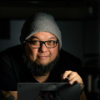I Am A Tool.
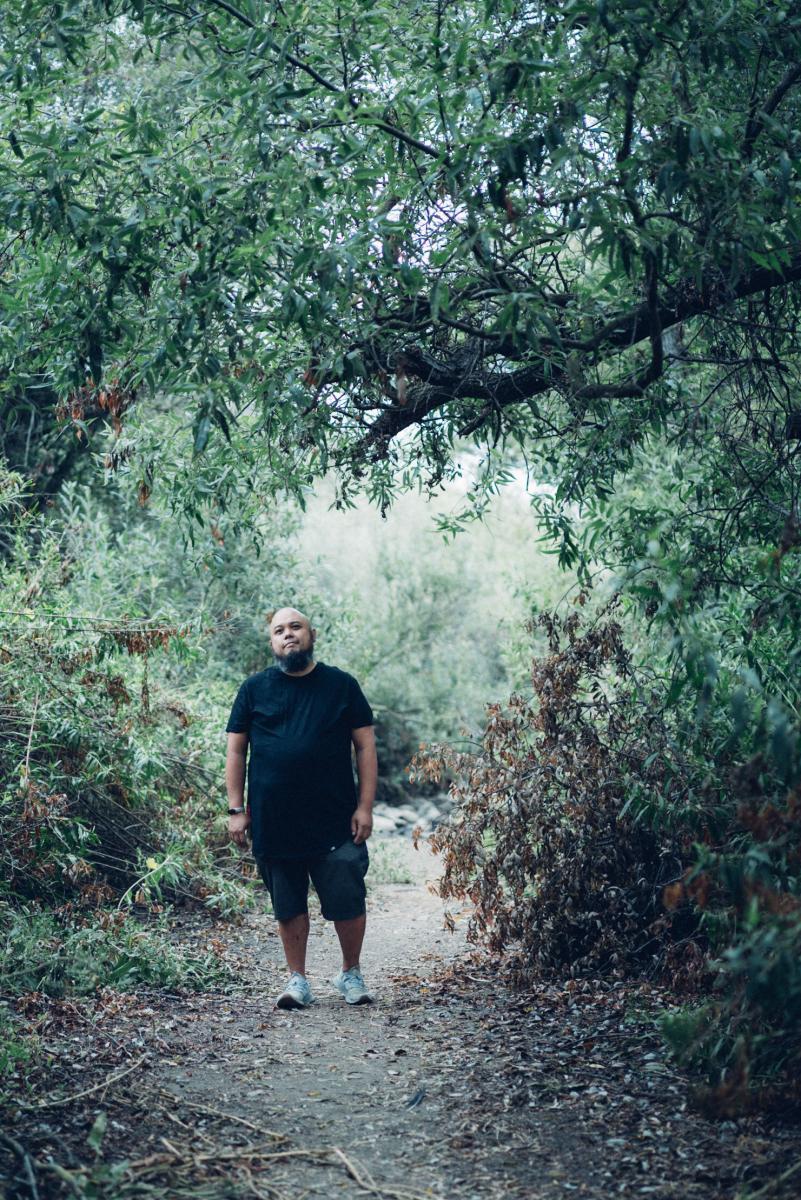 As a photographer, I am a critical component in the image capturing process–I am that tool that stands behind the camera, knowing what to say to make the subject smile a certain way; waiting for the light to hit a mountainside; capturing the oceans in a way that can evoke drama and chaos; and knowing when to push the shutter button to capture that special moment when the bride and groom kiss. I am the tool that takes those images and corrects the color, cleans up the background, brightens the photo, and fixes the shadows. I am the tool that sees the subject, empowers them to bring out a confident pose, a melting smile, or a strong gaze. I realize I am a strong part of the image capturing process, but a tool nonetheless–and for years, I have been perfectly fine with that.
As a photographer, I am a critical component in the image capturing process–I am that tool that stands behind the camera, knowing what to say to make the subject smile a certain way; waiting for the light to hit a mountainside; capturing the oceans in a way that can evoke drama and chaos; and knowing when to push the shutter button to capture that special moment when the bride and groom kiss. I am the tool that takes those images and corrects the color, cleans up the background, brightens the photo, and fixes the shadows. I am the tool that sees the subject, empowers them to bring out a confident pose, a melting smile, or a strong gaze. I realize I am a strong part of the image capturing process, but a tool nonetheless–and for years, I have been perfectly fine with that.
And then the pandemic happened.
I took my daughter out of school during a critical time in her social development. I had to find a way to manage an engineering team from home while also cancelling all my photography clients for the spring and the typically busy summer months (family reunions and senior photos, as well as traveling and being a brand ambassador). I also had to find ways to feed the family, juggling a mental balance of needing to hear the latest news on this new virus but also needing to keep my family and I calm in this “unprecedented” time. Dealing with my immunodeficient body, I began to fear online orders being shipped to the house for what type of dangers may sit on the surface of the items. I was scared of food and the outside. The success of my day job projects began to become secondary as my worry began shifting to wondering if I was going to continue being employed. Moreover, every member of the family was also juggling their own mounting set of anxiety–all while living in very close quarters.
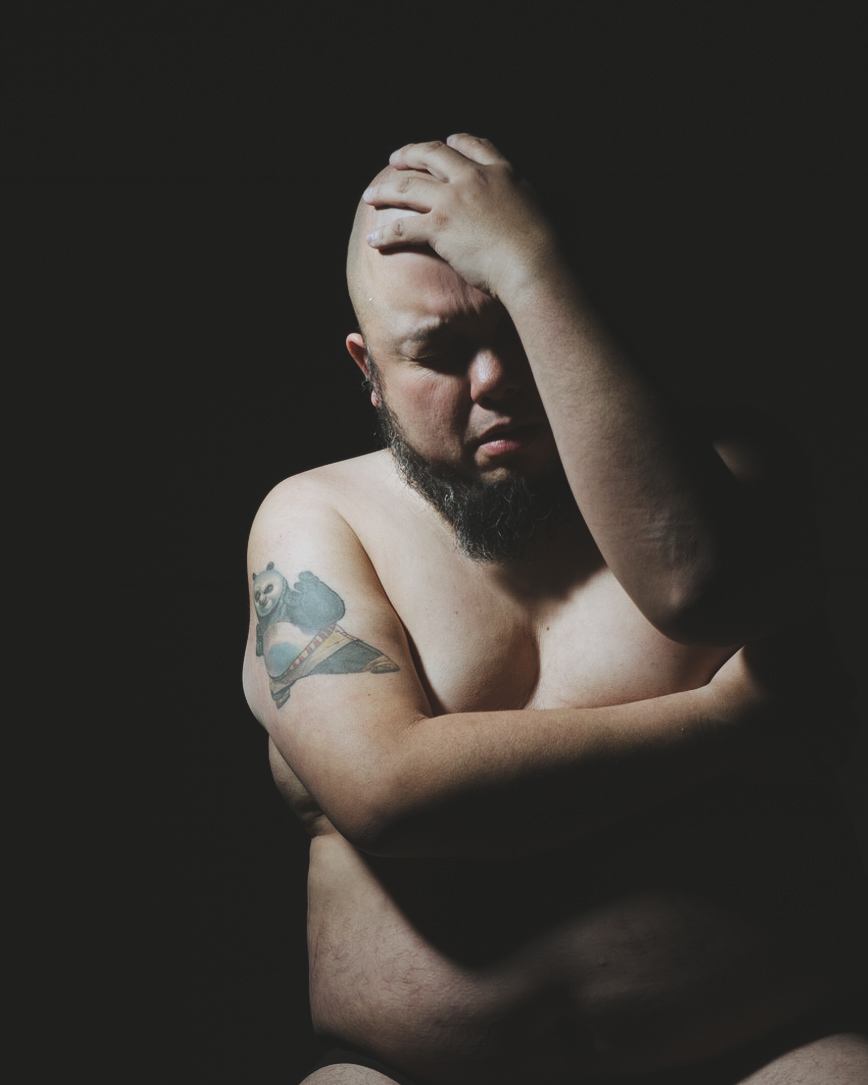 Suffice it to say, the stress was very high.
Suffice it to say, the stress was very high.
My problem was that my typical solution to handling the daily stresses was to get behind a camera–photographing the coast or people–and for several months into the pandemic, I could do none of those. As the stress grew, my health quickly plummeted. We had to stay at home. It was the combination of my unraveling mental state and seeing my trusty cameras gathering dust that I was thrust into a dangerous world that I swore never to enter.
I started to take selfies.
Trust me–selfies are something I long despised. In fact, I started an article years ago on how to photograph plus-sized people with the line: “I hate selfies.” But my desperation to get back to some type of activity where I could lose myself in the image capturing process began to weigh on me. I needed something to escape what was going on around the world and nurture my creativity. I grabbed my tripod, set my lights up, and configured my camera to take a photo every 10 seconds, gently placed my clothes at the corner of my studio, and sat down for a while trying to figure out how to blindly pose myself. It took me a while to “disconnect” from being the tool that captures images and shifting gears to get into the mindset of being the actual photo subject.
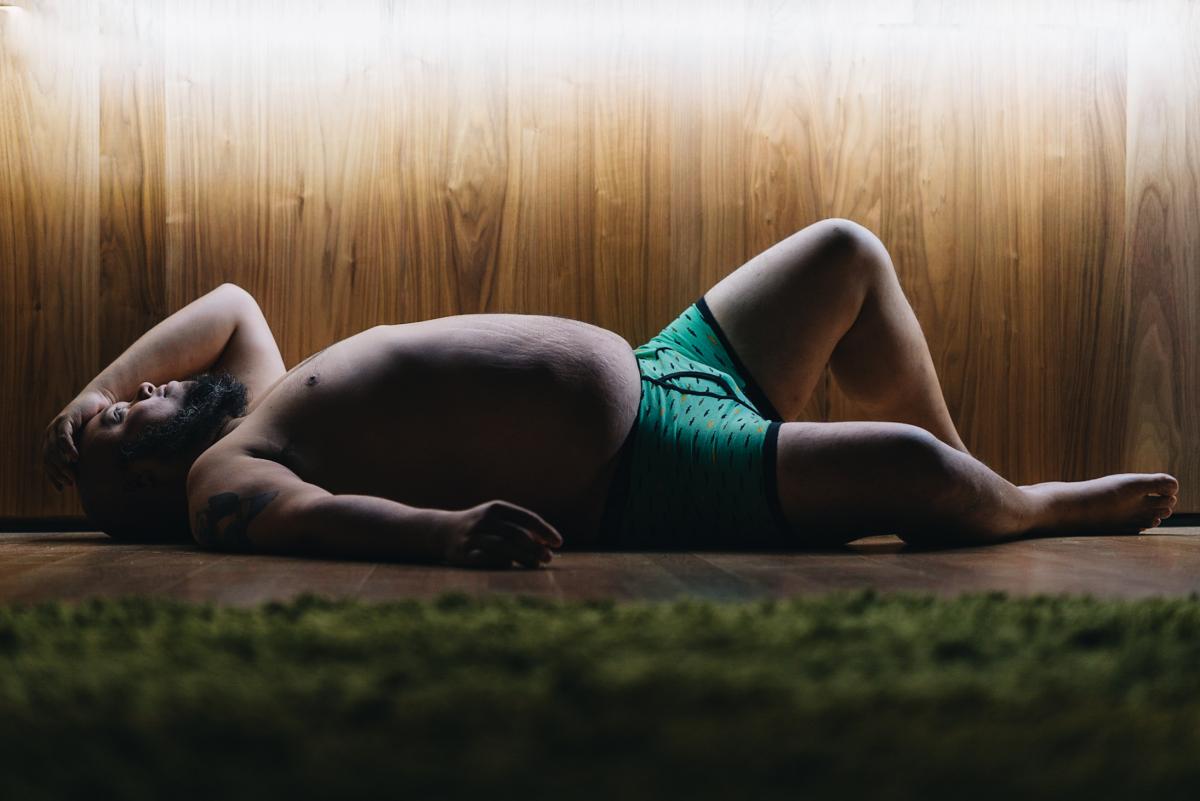 I closed my eyes, took a deep breath, exhaled and tried to let the fatigue, stress and anxiety emote through my face and posture.
I closed my eyes, took a deep breath, exhaled and tried to let the fatigue, stress and anxiety emote through my face and posture.
After a few minutes of sitting in front of a camera that just continued to take a photo regardless of how awkward I felt, I finally began to settle. After yet a few more minutes, I began to feel like a performer–instead of an observer. It was a new feeling–and I have to admit–it felt great. I took the memory card out of the camera and kicked off the editing as if I were processing the image as if I were editing the image of simply another person. This mental uncoupling allowed me to study myself. And I was surprised at what I found.
Growing up chubby, in much the same way as many others in my shoes, I was surrounded by media that showed people my size always as a “secondary character.” Big people were the funny comic relief, the hero’s sidekick, or even the dumb lazy character that always needed fixing. During my critical development years, I never saw the chubby guy as the source of strength, beauty or intellect. I thought I did well breaking through some stigmas–but I still never considered myself physically beautiful. With these self portraits, I used my lighting the same way I would as if I were lighting any other subject. I would leverage light to bring out details in the eyes. I used the lighting to allow me to highlight certain parts of the face or body, as well as create more depth.
Seeing myself on the other side of the lens allowed me to study my whole body.
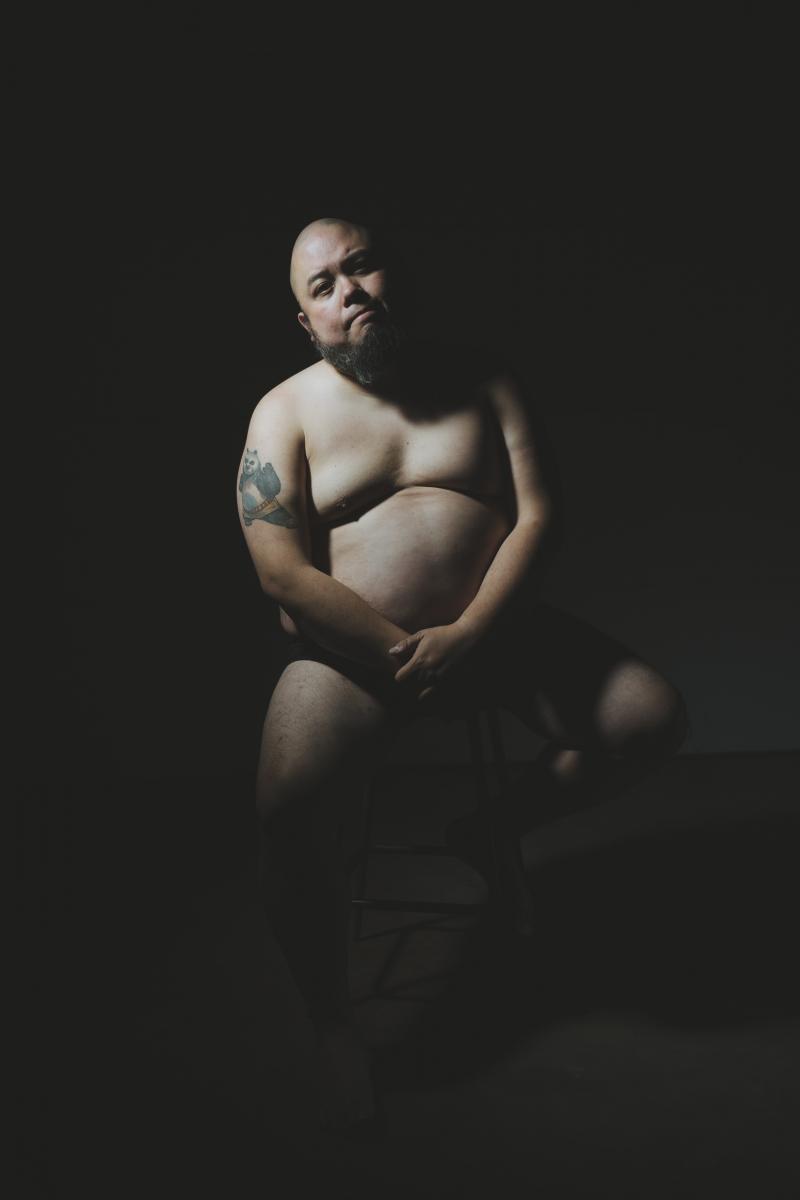 I was able to see how the curve of my torso would let light hit it in ways that reminded me of the way sporty automobiles were photographed. I saw large swaths of my body, smooth and soft. I saw my face, welcoming and mature. My arms–strong and capable–yet warm and inviting. My eyes–had the same sparkle as I see in the people I photographed, but fresh–since I rarely get an opportunity to see my own “windows to my soul.” My legs–they were necessarily strong, as they have supported and transported me my entire life. I was beginning to see myself beyond simply a tool for image capturing, but as the primary subject.
I was able to see how the curve of my torso would let light hit it in ways that reminded me of the way sporty automobiles were photographed. I saw large swaths of my body, smooth and soft. I saw my face, welcoming and mature. My arms–strong and capable–yet warm and inviting. My eyes–had the same sparkle as I see in the people I photographed, but fresh–since I rarely get an opportunity to see my own “windows to my soul.” My legs–they were necessarily strong, as they have supported and transported me my entire life. I was beginning to see myself beyond simply a tool for image capturing, but as the primary subject.
I started seeing myself as beautiful.
I proceeded to take more photos of myself, as I was the only plus-sized person I have access to during the pandemic. As I continued doing so, I got easier. I was able to wear both the photographer and subject hats. I became my own “doll” similar to what my young children would play with–eager to see what certain clothes looked like on me, and with fully-posable arms and legs. I was my own blank canvas–and I started to enjoy myself in ways I haven’t in my four decades.
I realized half a year into the pandemic that I have now become my own means of handling stress, at least for now. For me, it has allowed the creative gears to continue turning and my mind to be occupied with a little bit of relief. In this pandemic, I no longer shy away from the selfie–in fact, I embrace it. It has allowed me to feel more confident and beautiful in my own skin and undo much of the chubby “secondary character” stigma I grew up with. I became my own star.
Spencer Pablo is an engineer, scientist, content creator, photographer, and family man living in San Diego, California. He is a nerd and a creative. He doesn’t earn his sleep unless he exercises both hemispheres of his brain (the analytic and the creative sides). Spencer has had the honor of being a Sony Artisan of Imagery since 2014, but his roots in photography started long before that. His earliest memories in life tend to include a camera. He photographs everything. From landscapes to people to buildings to stars, there’s beauty everywhere. Taking pictures of everything allows him to keep learning and avoid getting formulaic with his photography.



